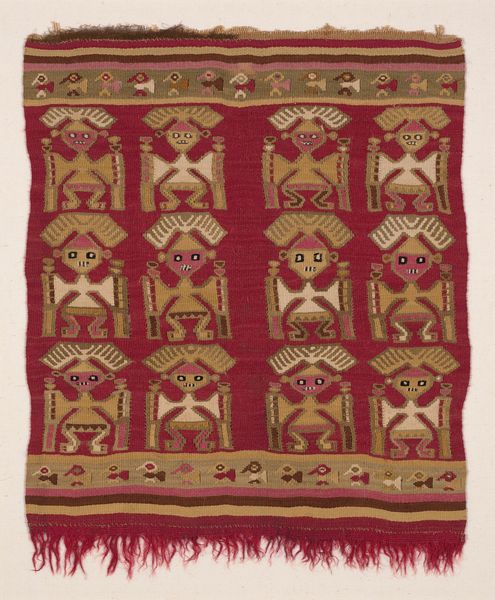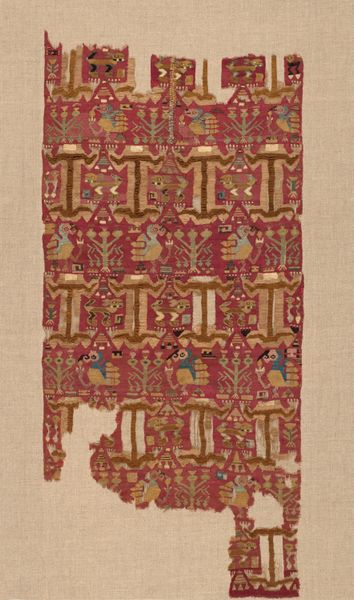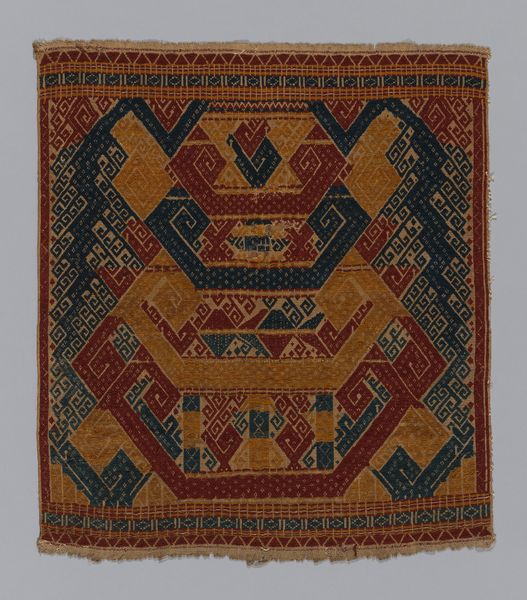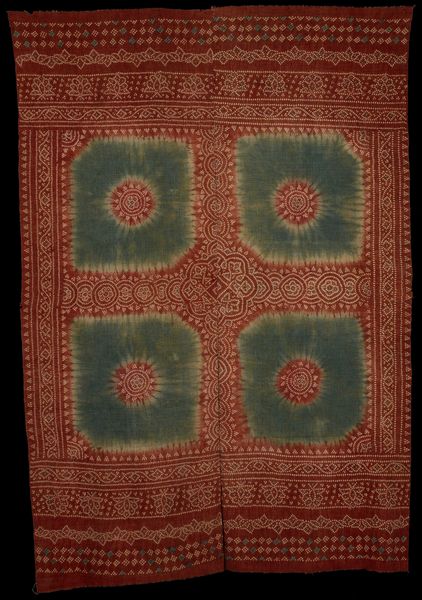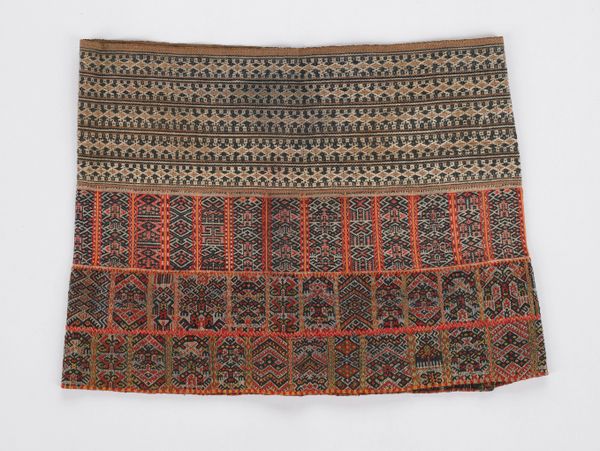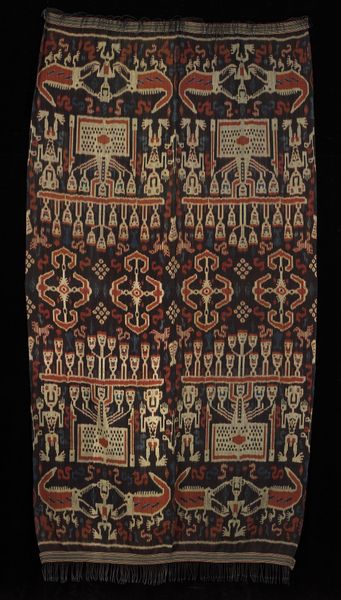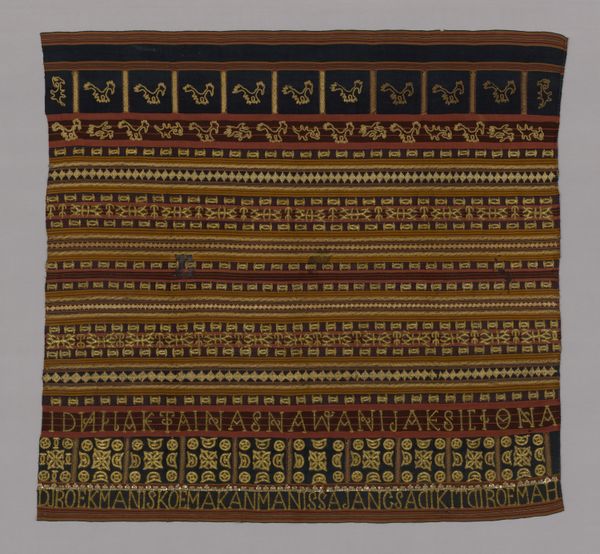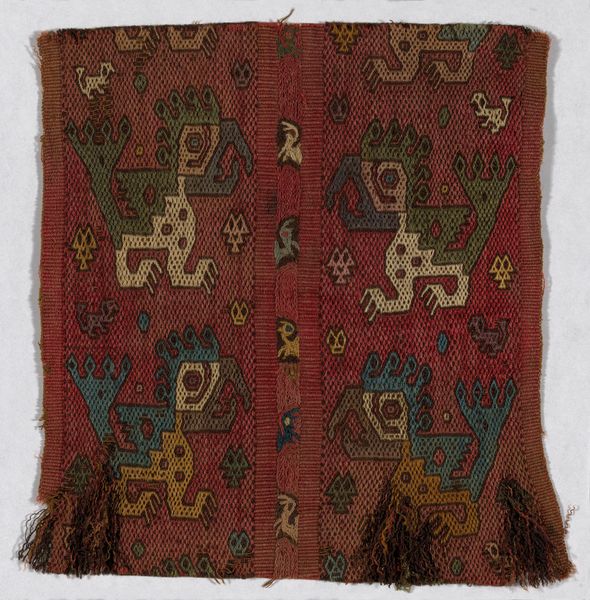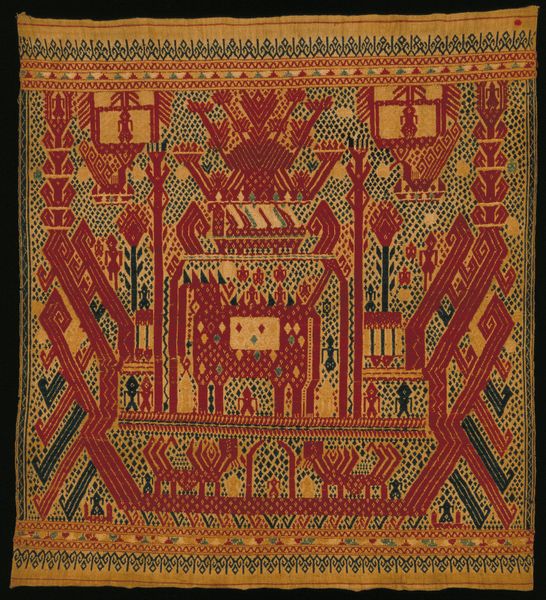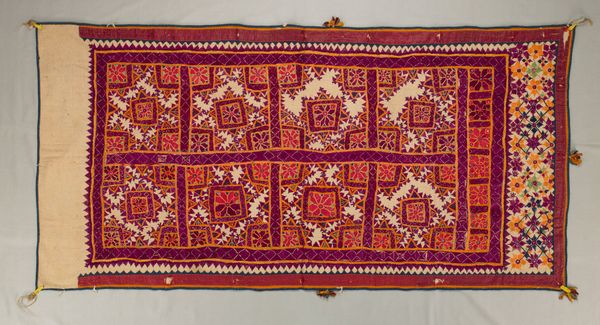
fibre-art, weaving, textile
#
fibre-art
#
weaving
#
textile
#
figuration
#
decorative art
#
indigenous-americas
Dimensions: 46 × 38.7 cm (18 1/8 × 15 1/4 in.)
Copyright: Public Domain
Curator: Here we have "Fragment (Loincloth)," a textile piece likely created between 1250 and 1470 by the Chimú people. The woven fiber work is currently held at The Art Institute of Chicago. Editor: Okay, wow. Immediately, it strikes me as intensely patterned. There's almost a hypnotic quality to the repetition. Curator: Indeed. It's fascinating to consider the role of textiles in Chimú society. Loincloths weren't merely garments; they were powerful indicators of status and identity. We see figuration, of course, and geometric patterns. These weren't arbitrary designs; they conveyed specific social and cultural meanings. Editor: It also makes me think about process, like the hours—days, probably—spent weaving. It's so tangible, isn’t it? This object embodies a community, a cosmology. I wonder about the hands that made this and what those people were thinking. There's a soulfulness in the piece. Curator: Absolutely. Feminist art historians, for instance, might analyze this work by examining gendered labor and craft within the Chimú context, further complicating Western art-historical narratives that traditionally privilege painting and sculpture. It compels us to consider indigenous cosmologies. Editor: Right, disrupting that typical hierarchy! I see this riot of colors. The bold figures give such a wonderful personality. It really invites your attention. I'd love to see this garment moving. Curator: Thinking about the survival of a fragment also speaks volumes about colonization and its impact on textile production in the Americas. The materials, design motifs, and techniques were not static but engaged in continuous dialogue with colonial forces, shaping Indigenous identity through both resistance and negotiation. Editor: Makes me rethink the fragment—incomplete but vibrant. The remaining imagery still holds such weight. Thanks, it really gives you something to chew on. Curator: It encourages us to broaden our perceptions and recognize the significance of fiber arts, moving beyond established parameters of fine art, to weave an interconnectedness between the artifact, its socio-political context, and us.
Comments
No comments
Be the first to comment and join the conversation on the ultimate creative platform.
